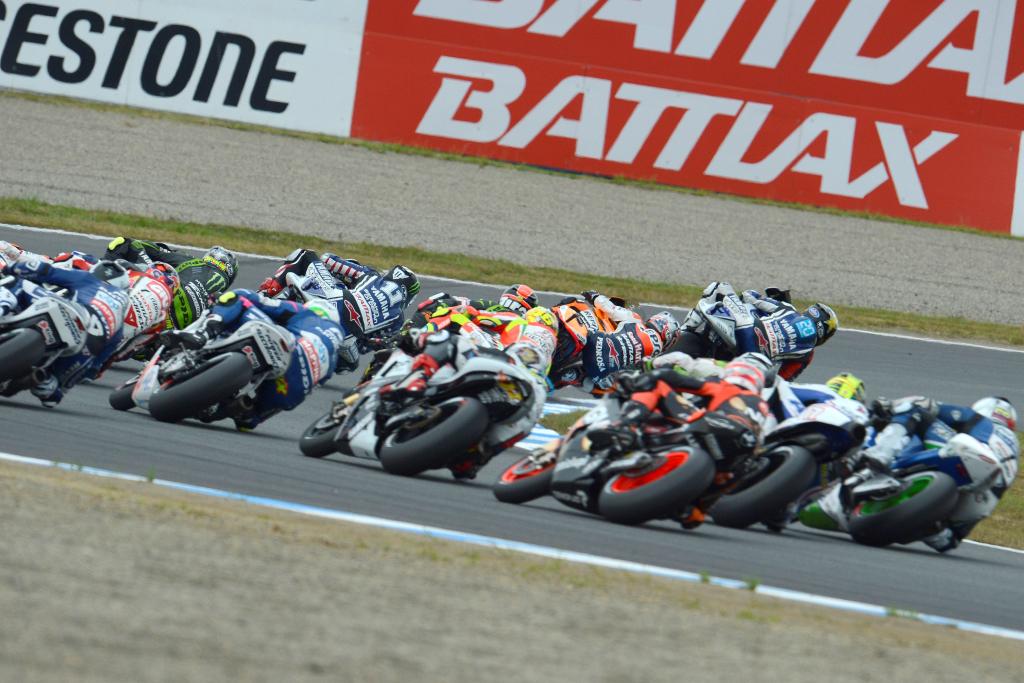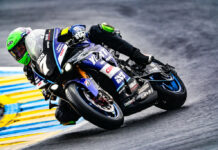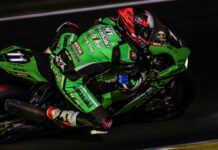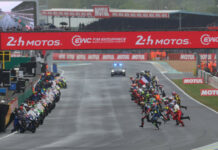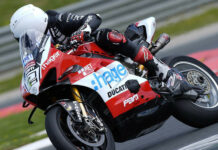Motegi MotoGP™ debrief with Shinji Aoki Bridgestone slick compounds available: Front: Soft, Medium, Hard. Rear: Soft, Medium (Asymmetric) Bridgestone wet tyre compounds available: Soft (Main), Hard (Alternative) Repsol Honda’s Dani Pedrosa won for the second consecutive time at Motegi in a race that saw an all-Spanish podium with Yamaha Factory Racing’s Jorge Lorenzo and San Carlo Honda Gresini’s Alvaro Bautista placing second and third respectively. Weather conditions over the whole weekend were excellent with sunny dry conditions and track temperatures around the thirty degree Celsius mark allowing riders to assess all the slick tyre options during practice and qualifying. With optimal track conditions for the race and plenty of time to refine a dry setup, tyre choice for Sunday’s race was uniform across the whole grid with the harder front slick used in combination with the softer rear slick. Q&A with Shinji Aoki – Manager, Bridgestone Motorsport Tyre Development Department Motegi is referred to as a ‘stop-and-go’ circuit. How do the frequent acceleration and braking zones influence tyre development for the Japanese Grand Prix? “The layout of Motegi places a lot of stress on the centre section of the front and rear tyres, so our tyre selection has to take this into account while also considering the wide range of weather conditions that are possible here. For the front tyre, the frequent heavy braking requires superior front-end stability, so we provide the hard and medium compound options alongside the soft compound in case of very cool conditions. “The centre section of the asymmetric rear slicks features a hard, durable rubber that can withstand the repeated acceleration on the abrasive tarmac, while the shoulders use relatively softer compounds to keep the tyre in its optimum temperature window and provide good edge grip through the slower sections.” Did the increased weight and power output of the 1000cc machines require any change in the tyre allocation compared to last year? “Over the season we have gathered a lot of data on the performance dynamics of the 1000cc MotoGP machines and have increased our knowledge significantly in this regard. Based on our data analysis, we were confident that the 2012 specification tyres could be offered in the same compounds as last year at Motegi and still provide the best levels of performance. The wider operating temperature of this year’s MotoGP tyres was able to manage the increased loads under braking, cornering and acceleration, and this was reflected in a new pole position and circuit lap record being set and a total race time that was sixteen seconds quicker than last year.” Every rider selected the softer rear and harder front slick for the race. Can you explain why? “The tyre selection for the race is once again related to the ‘stop-and-go’ nature of Motegi. Track conditions for Sunday’s race were almost ideal with dry tarmac and track temperatures around thirty degrees Celsius so all riders went for the tyre combination that provided the maximum level of performance as they didn’t have to consider track temperatures being too high or low. “If track temperatures were significantly cooler, which is always a possibility in Japan in October, than it is likely that some riders, particular those on CRT machines might have selected the softer front slick option for more confidence in the early laps.”
The Final Round Of Press Releases From Last Weekend’s Various Races
The Final Round Of Press Releases From Last Weekend’s Various Races
© 2012, Roadracing World Publishing, Inc.
